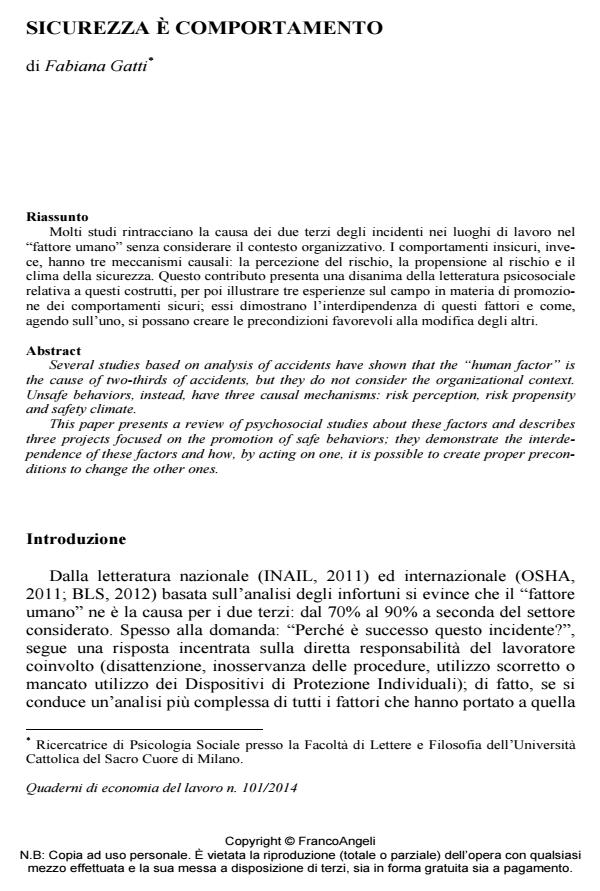Sicurezza è comportamento
Titolo Rivista QUADERNI DI ECONOMIA DEL LAVORO
Autori/Curatori Fabiana Gatti
Anno di pubblicazione 2014 Fascicolo 2014/101
Lingua Italiano Numero pagine 20 P. 113-132 Dimensione file 700 KB
DOI 10.3280/QUA2014-101006
Il DOI è il codice a barre della proprietà intellettuale: per saperne di più
clicca qui
Qui sotto puoi vedere in anteprima la prima pagina di questo articolo.
Se questo articolo ti interessa, lo puoi acquistare (e scaricare in formato pdf) seguendo le facili indicazioni per acquistare il download credit. Acquista Download Credits per scaricare questo Articolo in formato PDF

FrancoAngeli è membro della Publishers International Linking Association, Inc (PILA)associazione indipendente e non profit per facilitare (attraverso i servizi tecnologici implementati da CrossRef.org) l’accesso degli studiosi ai contenuti digitali nelle pubblicazioni professionali e scientifiche
Molti studi rintracciano la causa dei due terzi degli incidenti nei luoghi di lavoro nel “fattore umano” senza considerare il contesto organizzativo. I comportamenti insicuri, invece, hanno tre meccanismi causali: la percezione del rischio, la propensione al rischio e il clima della sicurezza. Questo contributo presenta una disanima della letteratura psicosociale relativa a questi costrutti, per poi illustrare tre esperienze sul campo in materia di promozione dei comportamenti sicuri; essi dimostrano l’interdipendenza di questi fattori e come, agendo sull’uno, si possano creare le precondizioni favorevoli alla modifica degli altri.
Fabiana Gatti, Sicurezza è comportamento in "QUADERNI DI ECONOMIA DEL LAVORO" 101/2014, pp 113-132, DOI: 10.3280/QUA2014-101006